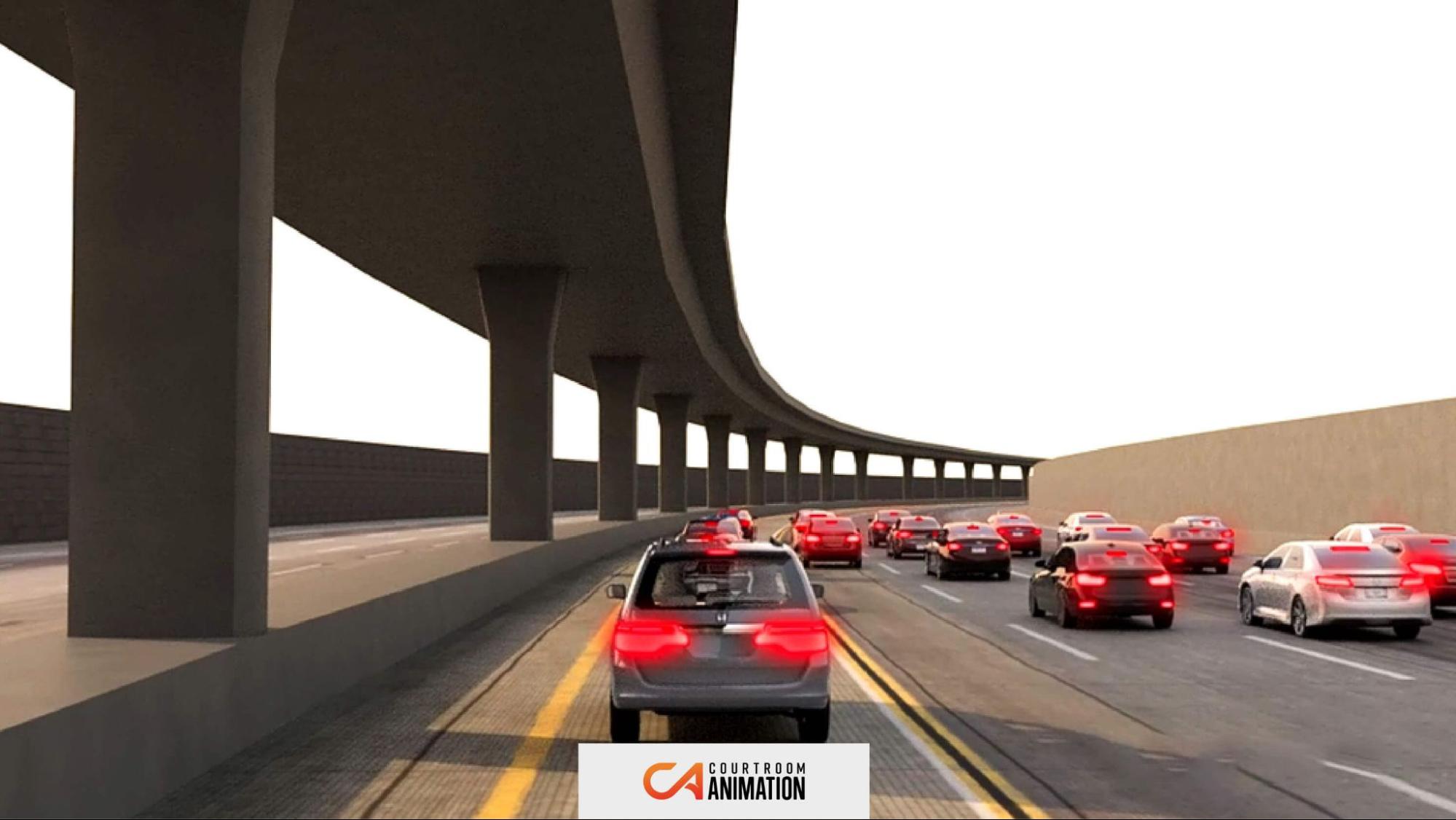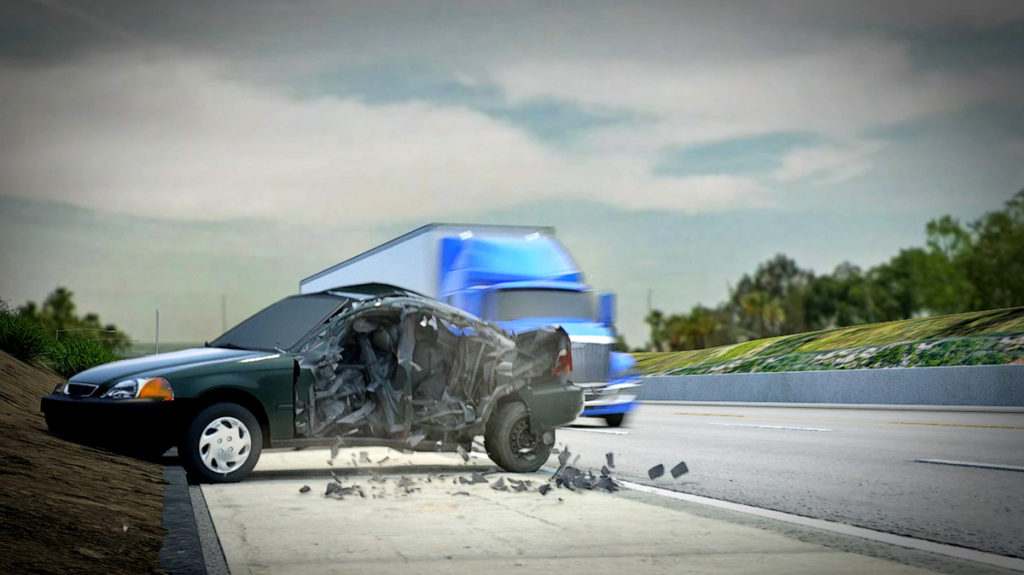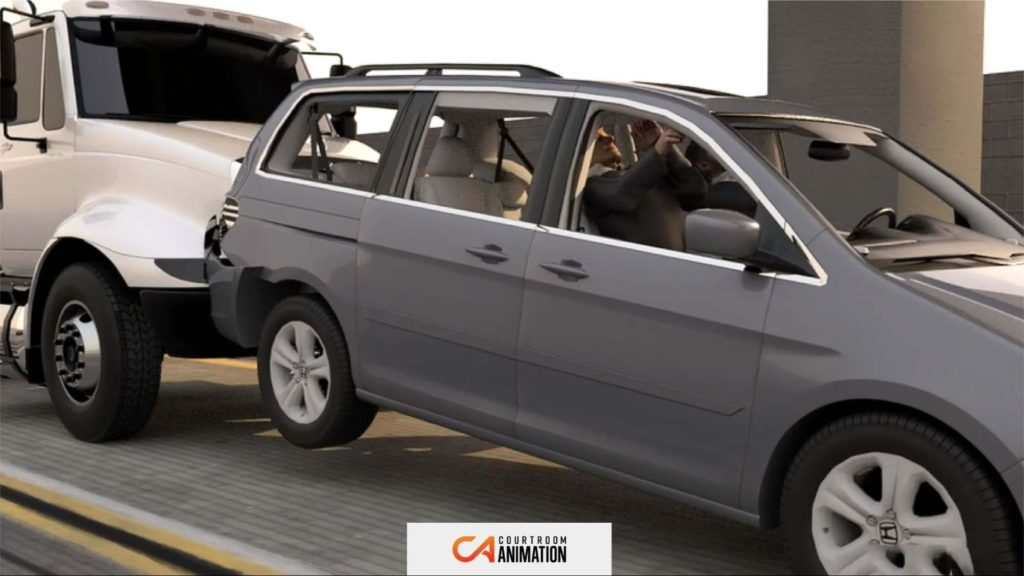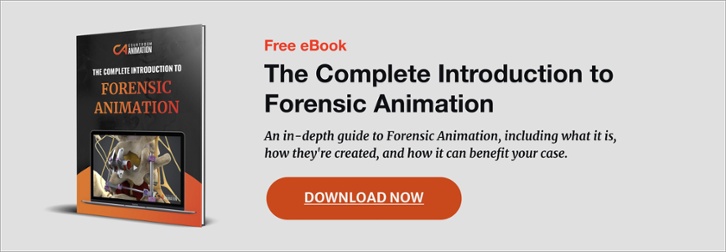
In accident-related litigation, the key to receiving a favorable verdict is often in the details of the accident itself. The challenge is that often the details of an accident are challenging to understand, especially for those who do not know your case as well as you do.
With 2,282,015 injuries reported from car accidents in 2020, you can be certain that your future (or even current!) cases will involve a vehicle collision. For defense attorneys, it could involve reducing liability for one of your company’s drivers. For plaintiffs, these cases can involve proving negligence.
What techniques can you leverage to help tell the full story of your client? For plaintiff and defense attorneys alike, an accident reconstruction can analyze and draw conclusions about the events of a car crash.
However, it might not be enough to paint a clear and compelling picture for your audience. Before we explain how an accident reconstruction visual can be used in court, let’s define it.
What is Accident Reconstruction?
Accident reconstruction is the process that accident reconstruction experts go through to investigate, analyze, and explain the causes of motor vehicle collisions and other accidents involving boats, buses, motorcycles, planes, trains and more.
Accident reconstruction experts leverage their diverse engineering and human factors backgrounds to work with various inputs including laser scan data, satellite imagery, surveillance footage, skid marks, photography of the scene, traffic collision reports, and more to solidify the foundation of your car crash animation.
After evaluating the data, accident reconstructions can answer questions like:
- “How fast was the vehicle going at impact?”
- “How much did the vehicle slow during the locked-wheel braking?”
- “At what angles did the two vehicles collide?”
An accident reconstructionist will be able to determine pre-impact and post-impact speeds, any changes in velocity, the physical parameters of the accident, and more. An accident that requires reconstruction can involve pedestrians, sem-trucks, cars, and even airplanes.
These reconstructions involve various complex data sets, which is why attorneys and their experts often use accident reconstruction animations to support their analysis. These visual accident recreations are classified as demonstrative evidence.
Traffic accident animations are a highly effective method of demonstrating liability, and visualizing the sequence of events that caused an accident to occur. When used appropriately, this visual aid can help a mediator, judge, or jury resonate with your reconstruction and see the whole picture.
What are the Challenges of Accident Reconstruction?
Given that accident reconstructions use complex information, such as velocity calculations and laws of physics, it’s reasonable to conclude that a layperson would have a hard time following. Accident reconstruction experts who are called to the stand are tasked with communicating their opinion in addition to that hard to follow data.
In today’s tech-savvy environment, your expert also competes for attention and retention, as people now expect some form of visual litigation aid. Even if your expert witness has superior communication skills, the jury still has to fully understand the facts in a short amount of time.

Not only are you counting on your jury to understand the data, but you also need them to remember it during deliberation. A jury will only remember 10% of verbal testimony, and when presented with visual support, that number increases to 85%.
Visual support for detailed information is almost always necessary for your vehicle accident cases. You risk your audience forgetting, or worse, misunderstanding your point among emotional arguments or conflicting witness testimony.
How are Accident Reconstructions Visualized?
Whether you’re dealing with complex data, conflicting testimony, or just need to support your expert witness, creating visuals of your accident reconstruction data can increase the strength of your argument.
Traffic accident animations offer visual accounts from varying perspectives. They can provide one witness’ version of events versus what should have happened. These forensic animations give your party more credibility, especially if the opposing counsels’ expert presents without their own visual.

These demonstrative visual aids can also highlight:
- Behaviors: Animation can highlight how parties of a vehicle collision acted before, during, and after the event, showing each person’s respective liability.
- Timeline of Events: Understanding when something occurred can be paramount to understanding how it happened. Accident animation lays out a solid foundation for timelines.
- Alternative Scenarios: Based on behavior, an accident recreation video can show potentially different outcomes had another decision been made.
- Different Perspectives: These graphics can represent the driver, witness, or other views to provide an accurate overview of the scene.
When there are various perspectives and complex data sets, taking the data from an accident reconstruction and turning it into a data visualization can be a game-changer during trial. If you’re still in mediation, the opposing counsel can see the strength of your case and provide a better settlement offer.
What’s the ROI on an Accident Recreation Animation?
When you invest in your case, you need it to yield a return on investment (ROI). Accident recreation animations are easy for both the plaintiff’s counsel and defense to measure ROI.

For example, in one case, when a plaintiff sued a tanker truck company for damages, the initial settlement offer went from $450K to $550K with the help of an animation. The visual showed that the trucker had plenty of time to break using multiple perspectives, but failed to do so.
When the plaintiff’s attorney presented accident reconstruction animations, they resulted in the defense increasing their settlement offer to one million dollars – an over 2,000% ROI!
Whether you’re a plaintiff counsel or defense attorney, hundreds of thousands of dollars could be on the table in these kinds of cases. When a motor vehicle collision animation makes that much of a difference in mediation alone, the investment is invaluable.
Working with an experienced forensic animator is the key to a memorable legal graphic or video. One attorney who hired the forensic animator for a different collision case credited his winning settlement to the visual itself:
“[Courtroom Animation] was able to visualize multiple perspectives to show how the truck driver was at fault, not my client. Not only did they show multiple perspectives, but we also showed altered scenarios in which the truck driver diverted from hitting my client. The case went from 100% plaintiff’s fault to almost a 7-figure settlement for the plaintiff.”
— Jon Teller, Wilshire Law Firm
Where Can You Start Looking for an Accident Reconstruction Visualization?
When dealing with complicated information from an accident reconstructionist and their data, your audience needs more than an oral explanation. Complex collision terminology is problematic for an inexperienced person to comprehend and recall during deliberation.
There’s a reason why legal forensic animations are quickly becoming mainstream and in demand across the country. Don’t wait to elevate your collision case’s argument!
Schedule a consultation if you’re interested in learning more about how forensic animations can help your client receive a favorable outcome. You can also download our free eBook below to learn more about supplementing your case strategy with visual aids.
